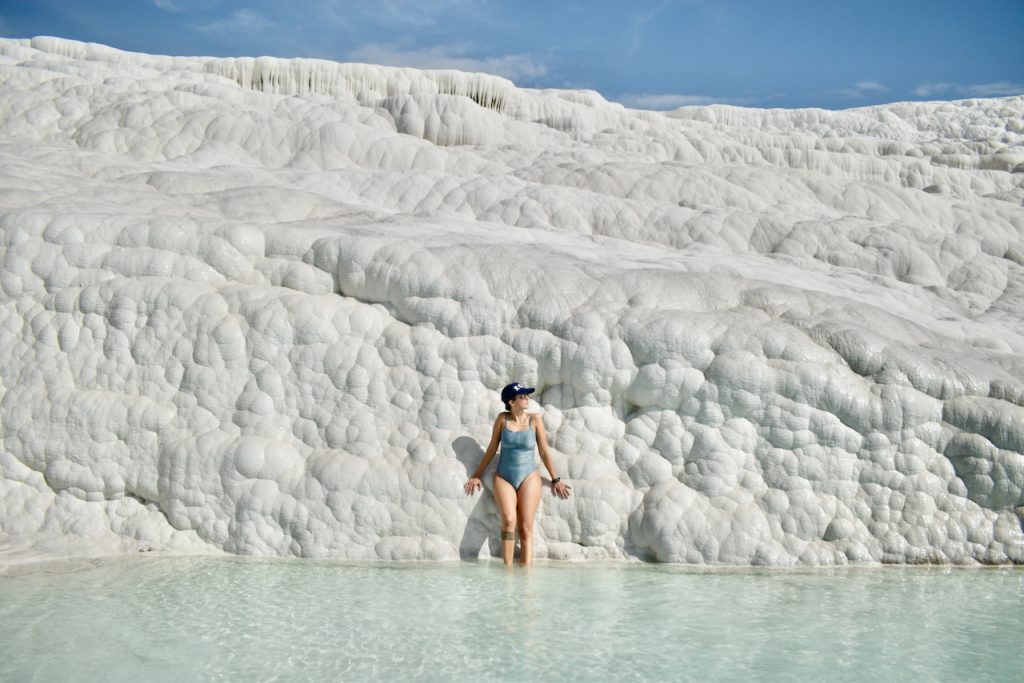Hi there,
From Ölüdeniz we organized ourselves to visit Pamukkale. The idea was to go with a Turkish friend of Diego’s who was in Denizli at the time.
We rented a car for 50 euros for two days. From Ölüdeniz to Denizli it takes 3 hours by car. At first, we thought about going by public transport, but the trip took about 6 hours.
We left the house at 7am and the road leading to Denizli was full of stalls selling melons. We stopped to buy, and they didn’t speak English, but we understood each other. Diego left her the change, which was about 10 cents, and the lady then came running to give him another small melon.
We arrived at Pamukkale, and I was surprised because it was not at all what I expected.
Pamukkale is a natural area located in the valley of the Menderes River. The tectonic movements that occurred in the fault of the basin of this river caused strong earthquakes and, in turn, the appearance of numerous hot springs. It was those waters with a high mineral content (bicarbonates and calcium) that created Pamukkale. Thus, thick white layers of limestone and travertine produced those cascade forms down the mountainside, giving the sensation of being in front of a frozen waterfall.
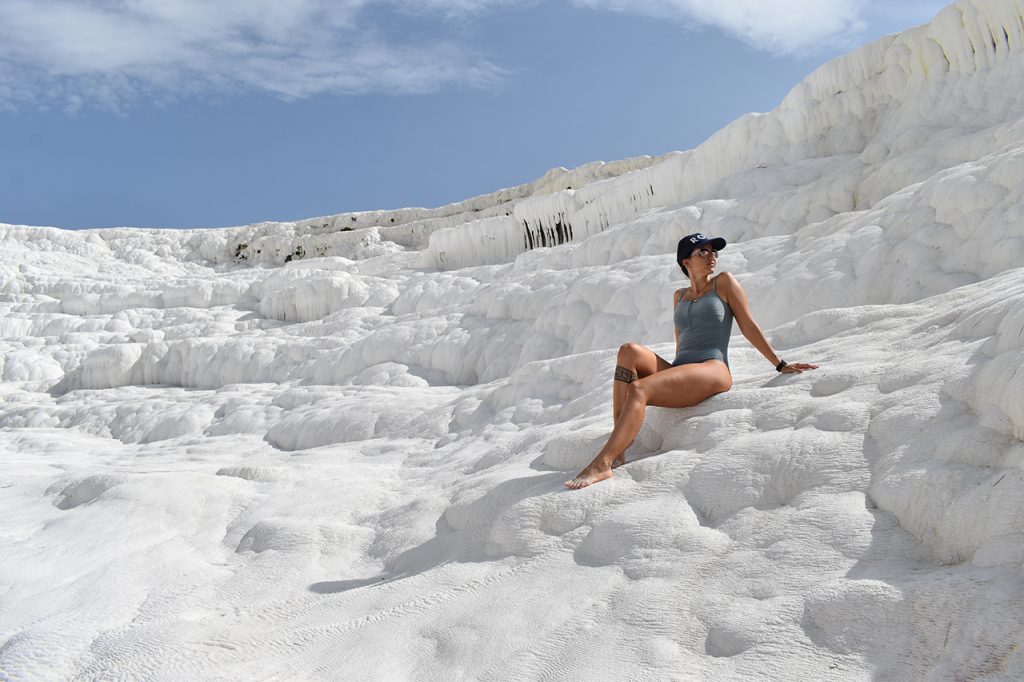
From the car you can see a side of the mountain all white. The entrance cost 100 TL, which at that time was 10 euros. Admission includes Pamukkale, Hierapolis, the museum and Laodikeia.
You must take off your shoes so as not to damage the surface and if you want you can leave your socks on.
We brought swimsuits in our backpacks, but the changing rooms were at the top of the mountain, so we ended up changing covering ourselves with a towel next to an empty pool.
Imagine that it was the end of October, and it was over 30 degrees; In addition, with all white, I ended up charred.
I imagined it to be different, I thought it was an infinite thing of wavy pools in which one could swim and completely sink. There are many pools that are closed because they are empty and in the part that can be visited, there are some empty pools and others full.
The water is knee-deep at best, so swimming is not an option. Also, the bottom is like sand, and everything gets mixed up when you start walking.
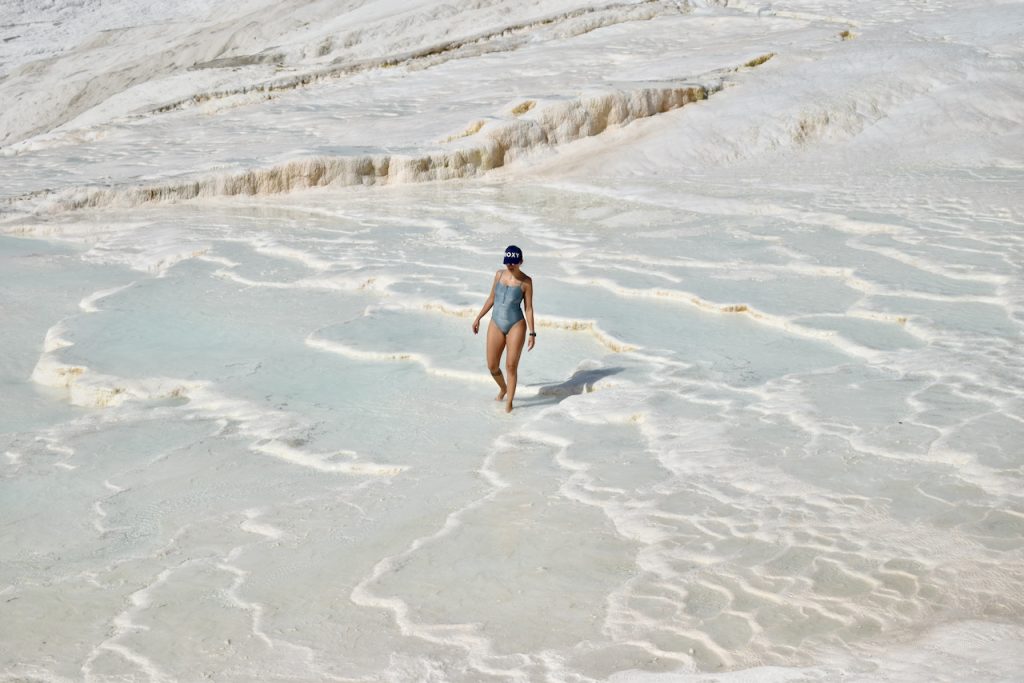
We did the photo session and half soaked in the one that was better.
There is a bus that leaves you at the top of the mountain and most tourists do that, they don’t walk up; so, the first two pools from top to bottom are full of people. If it was now full, I can’t imagine in high season.
Etem told us that the locals often visit Pamukkale to watch the sunset, especially since the heat is unbearable at noon.
Being at the top you can see that most pools are empty and closed so that people don’t even walk on top. Etem told us that a hotel complex was built a long time ago that took a lot of the water from Pamukkale, so all those pools dried up. Seeing the negative impact this had had, the hotels were demolished, and the water returned to Pamukkale, but the damage that had been caused was not recovered. So those pools that look empty have been like this for many years.
On the way to the changing rooms, we saw the Ancient Pool or Cleopatra’s Pool. It loses a lot of charm because it is surrounded by restaurants and other establishments. You must pay extra to get in and we ruled it out since there were a lot of people and it didn’t seem safe to us with the coronavirus.
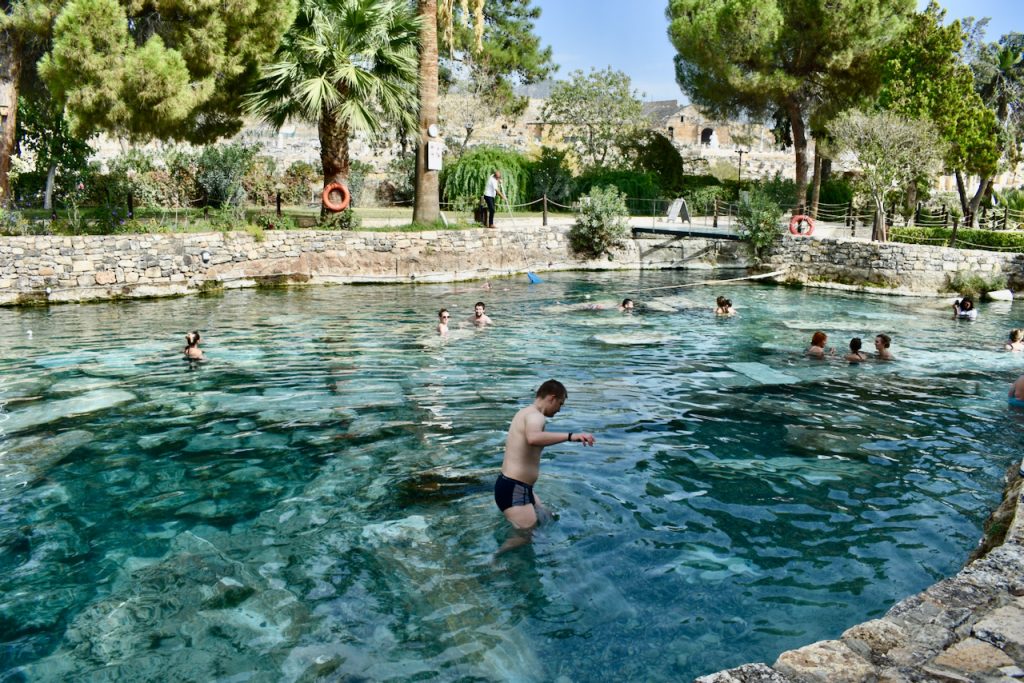
We showered, changed, and set off on our way to see Hierapolis. That was already around two in the afternoon, and I felt like I was dying from the heat, I don’t even know how I got up the mountain to get to the amphitheater. Yes, it was worth it. It was the amphitheater that I liked most of the ones we saw in Turkey.
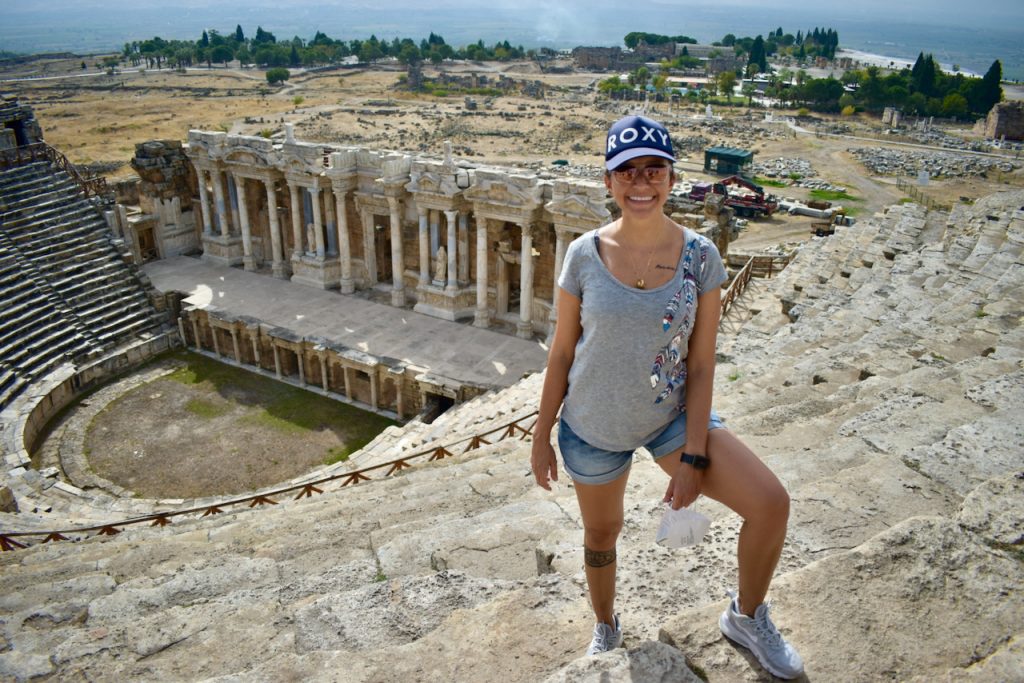
Hierapolis is an ancient Hellenistic city declared a World Heritage Site in 1998. It was established around 180 BC. It collapsed after an earthquake during the reign of Tiberius and was rebuilt, transforming it into a typically Roman city. During that period, it became an important summer rest center for nobles from all over the empire who came to it attracted by the hot springs. It was destroyed by an earthquake in 1354.
We continued touring the entire complex of ruins, which is a giant thing. We also saw more turtles.
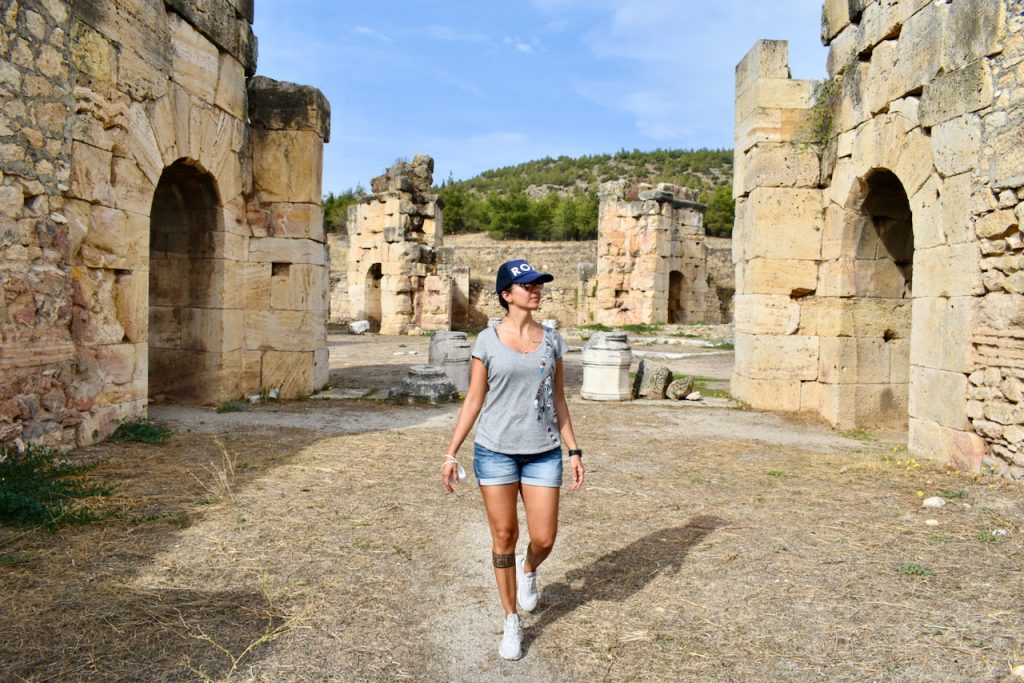
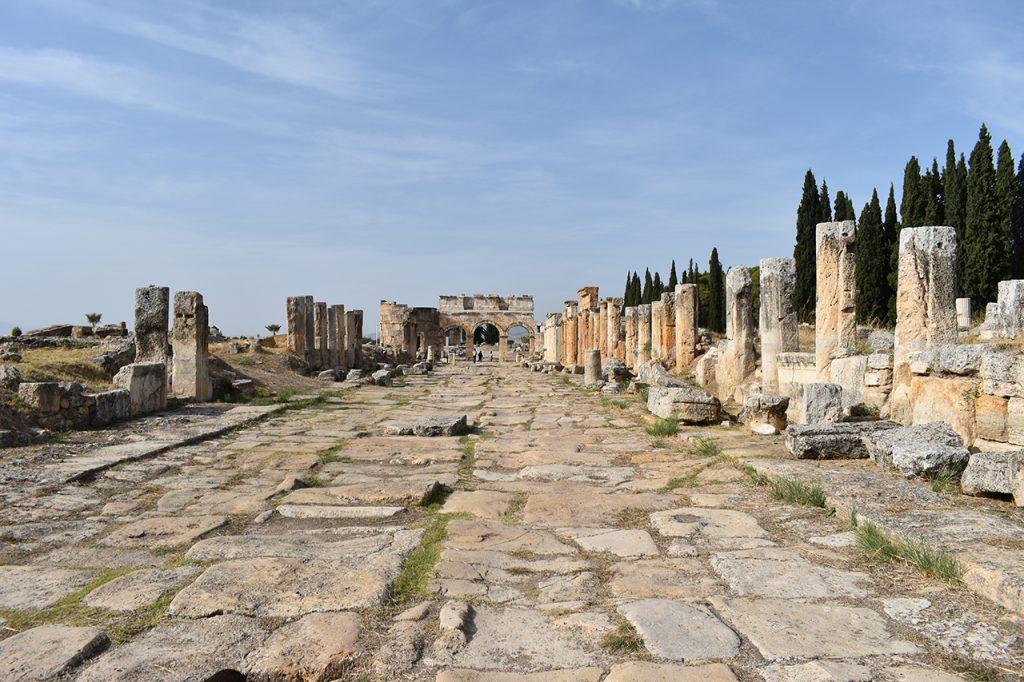
Around 5 in the afternoon we started our way back. We had to go back down the mountain of Pamukkale to get to the car, so we had to take our shoes off again. You think that the surface is not smooth at all and when you have been walking there for an hour, it starts to hurt. So after having destroyed our feet at noon, taking off our shoes again to go down the mountain was torture; Add to that my plantar fasciitis, I felt like they were sticking needles all over my feet.
We got to the car with broken feet. I was half dead between sunstroke, exhaustion, and hunger.
We went to Laodikeia. These ruins are on another mountain and from there you can see Pamukkale. We covered it all in about 20 minutes because in general, there isn’t much to see, and it seems like a little after having seen Hierapolis.
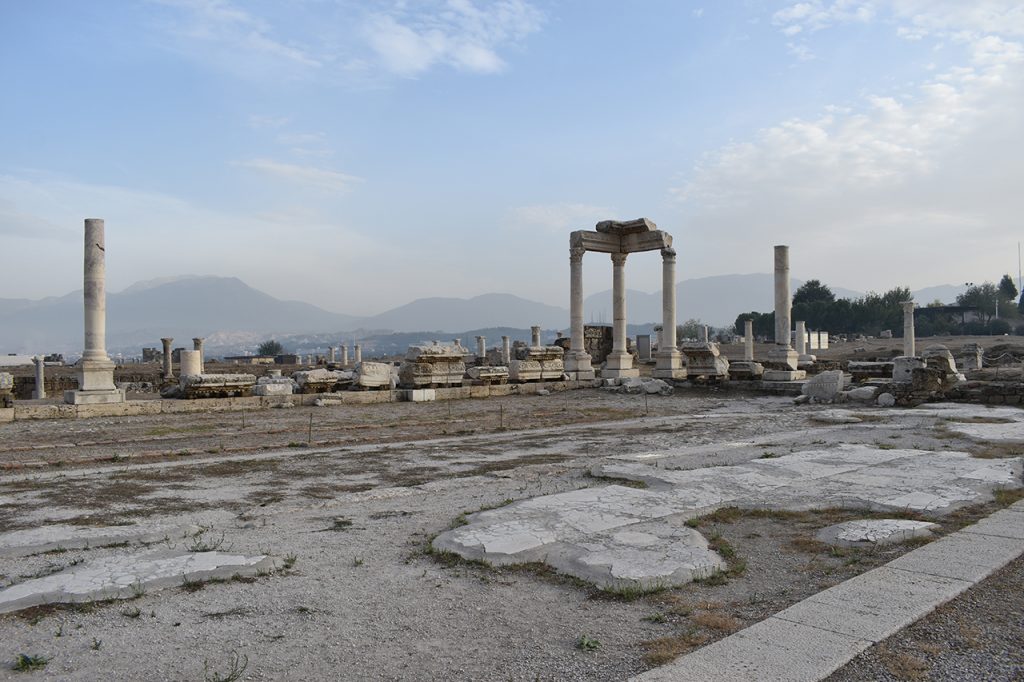
Laodicea or Laodikeia is an ancient city of the Seleucid Empire, important for being a key center of commerce and the banking world. It was also destroyed by an earthquake.
To end the day, we went to have dinner at a super cute restaurant that Etem always goes to. It is not a vegan restaurant, but almost all the entrees were vegan, and we ate like kings.
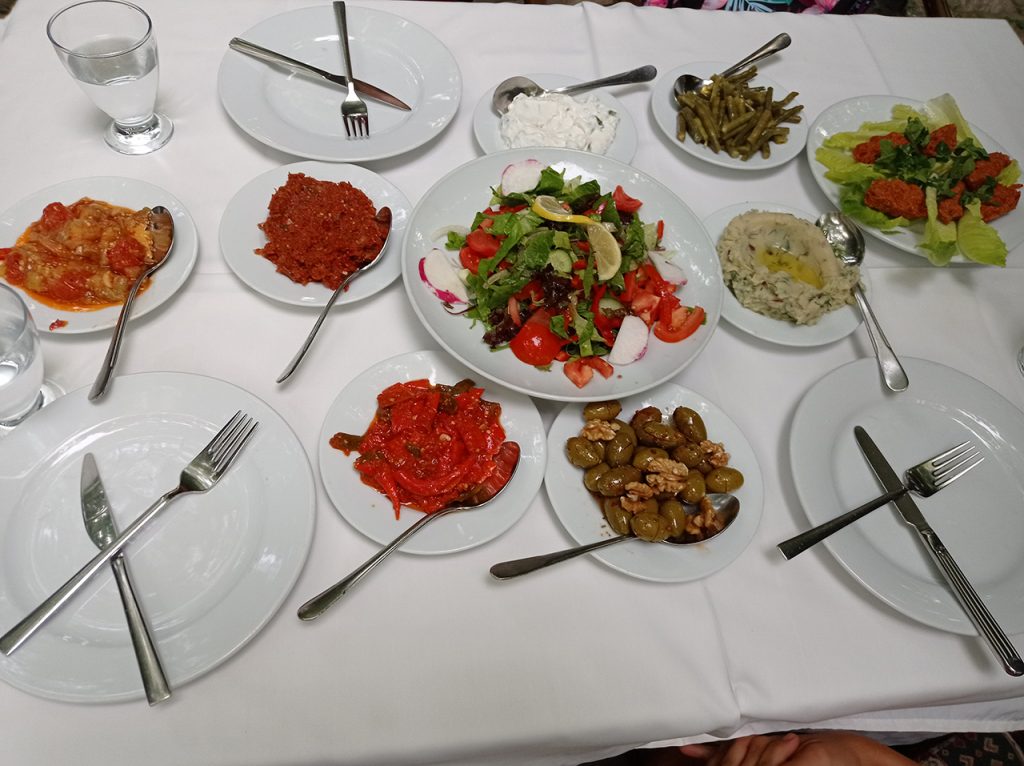
In general, I liked the visit to Pamukkale. It is small for what I imagined and gives a bit of the impression of a theme park, but we visited it in the low season and after the covid, the best time to find as few people as possible. It would also have been better to arrive as soon as it opens, but for that we would have had to leave Ölüdeniz at 4 or 5 in the morning.
Here is the link to my Youtube channel:
More articles about my trip to Turkey:

